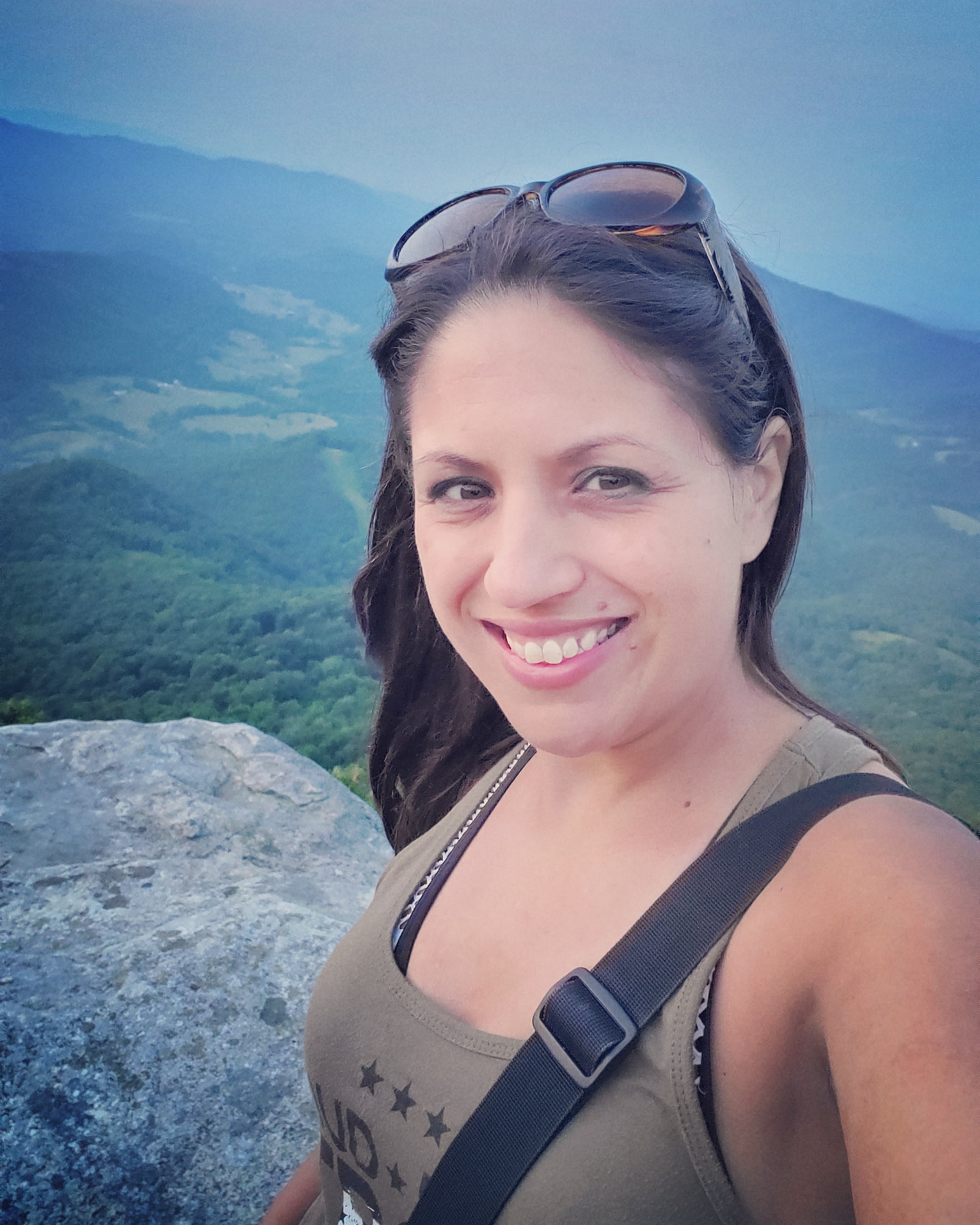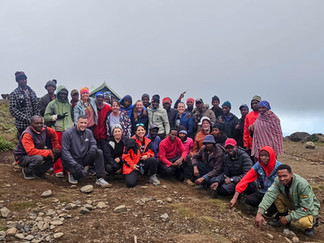Hiking Kilimanjaro: The World’s Highest Stairmaster
- Jeanne: owner Wanderlust Explorations

- Apr 2, 2024
- 6 min read
Updated: Sep 27
My Bucket List turned reality
Mount Kilimanjaro wasn’t even a blip on my bucket list radar until I found myself hiking Machu Picchu. It’s funny how bucket lists evolve—sometimes they sprout from unexpected conversations with fellow adventurers. Fast forward two years, and here I am, fresh off a flight (literally due to a full day of delays) and standing at the Machame trailhead, ready to tackle something no amount of research could truly prepare me for.
“If your dreams don’t scare you, they aren’t big enough.” Kilimanjaro, the tallest standalone mountain in the world made me question my own life choices. The miles, the terrain, the physical training—I had it all down. But the mountain itself? That was a mystery I was about to learn all about.

Porters: Superhuman Beasts with Hearts of Gold
These porters were more than mere carriers of our belongings which was 40lbs per person. They were superhuman beasts, trekking day in and day out, often in worn-out shoes and sometimes without the right gear. Yet their hearts burned with an unyielding strength. They supported each other, shared laughter, and never forgot to greet us with a warm “Jambo” (Swahili for “hi”). Check out their welcome song for us on the first night.
Guides: The Heroes of the Hike
For six days, our guides were our lifeline on the trails. Amani, our head guide, led a team of pros—Florence, Leonard, and William. They all had one thing in common: years of experience with Leken Adventures and such a passion for this mountain and what they do for hikers.
They were there for us every step of the way, through every tear and tough moment. They made sure we felt okay about the tough times and kept us moving forward. When the mountain got tough and our group spread out at different paces, they made sure everyone who could reach the top did, and those who couldn’t were safely brought back down.
Mountain Meals
Bruce, our awesome waiter, would start our days right with a cup of coffee in our tents. Watching the sunrise with a warm mug in hand was just perfect. I’m not big on porridge, but it’s a big deal here and gives you lots of energy. (I still didn’t eat it lol) We had fresh fruit, tasty homemade soups, and lots of local foods like rice, noodles, and different kinds of meat—all local African cuisines.
Meals were shared with the group, and there was always plenty to go around. Nothing went to waste; the crew made sure of that. Sadik, our chef and assistant guide, worked magic on his small stove, using river water to cook up some serious meals. We didn’t need to worry about water—boiled water was safe to drink, and the porters even carried it up when there was no source nearby.
Eat Well, Hike Well
Weather Woes on the Mountain: A Comedy of Errors
Let’s talk about the weather on my mountain adventure—it was like Mother Nature couldn’t make up her mind! February is winter in Africa, which makes it one of the best times to climb Kilimanjaro, and there I was, basking in 80-degree weather, convinced I was sun-proof. Spoiler alert: I wasn’t. Note to self: when everyone tells you to wear sunscreen, do it.
I rocked a tank top until day four when the “Arctic Desert” welcomed me with a hailstorm. Surprise! Early mornings were chilly, but as soon as the sun peeked out, it turned the rocks into a personal sauna.

We had our share of cloudy days and one night of rain that left me drenched. Not cold, just wet and grumpy. But at night? Thermal pajamas, fleece, and my trusty sleeping bag made me a cozy burrito.
Everyone talks about the summit freeze, but there I was, sleeping in just my PJs, 2 other layers, and a beanie. Summit day hit, and guess who forgot extra gloves? This gal. Seven layers on and just my trusty fleece pants (which were MVPs of warmth), but my hands? Ice blocks. The guides had to play hand warmers because mine were frozen with sad little lukewarm heat packets (do not buy off brand)
Lesson learned: invest in good gloves and hand warmers that actually work. And maybe next time, go for less bulky layers—Don't be a walking closet.
But PS I think the horror stories I heard of the cold were a little dramatic. It was cold but with the right gear it was tolerable.
The Mountain: A True Test of Grit
The Machame Route on Kilimanjaro is no joke. While named as one of the easier paths, it’s packed with cool spots like Shira Camp, Lava Tower, Barranco Wall, and Karanga Camp. But what truly sets this climb apart? The five distinct climate zones that unfold as you ascend this iconic mountain.
Farmland Area: We started in the farmland area, where the air was warm and pretty.
Rainforest: Next came the rainforest, lush and dense, teeming with birds and monkeys.
Moorland: Then we moved on to the moorland, with funky trees and flowers, reminiscent of the Scottish Highlands.
Arctic Desert Part: The desert part followed—dry, with tough plants adapted to the harsh conditions.
Freezing Cold Arctic Zone: Finally, we reached the freezing cold Arctic zone at the summit.
Climbing the Barranco Wall was a highlight. It felt like scaling a sheer cliff, like a Billy goat for miles. Our legs were tested, especially when we camped at Barafu Camp, hanging off the mountain’s side at 15,000 feet. Check out the video, the campsite I zoom in on is where we started.
By day four, Kilimanjaro altitude sickness and a cold were taking their toll on many of the hikers. Those last few miles to Barafu Camp were brutal. Sick with a cold and hurting from endometriosis, I hit a breaking point. But right before the summit, everything hit me at once. This was a vulnerable moment that many did not see as sometimes you just need a moment to yourself. If you do not like crying and bad words don't watch. This is the reality of hiking sometimes.
Kilimanjaro Summit Attempt
Waking up after just two hours of sleep was brutal. Guided hikes have their downsides: late dinners, waiting for everyone, and the time it takes for porters to cook. Usually, not a big deal, but on summit night, it hit me hard.
Four of us huddled in the tent for breakfast, silently wondering if we’d make it to the top. The hike was brutal—straight up the mountain, gaining 4,000 feet in elevation over just 3.2 miles, all in complete darkness. Some headlamps died due to the cold (thankfully, mine was recently changed). PS: It still died.
The arctic wind was relentless, nearly knocking us over despite our hiking poles. The worst in five years—just my luck. I fell behind faster hikers, fever creeping in. Unstoppable coughing and burning throat from the cold air. By day five, my body felt drained, energy sapped away.
Three guides for four of us, as some struggled from the start. We split into two groups by pace. My legs weighed like lead; wind whipped my face, burning my skin despite the baklava.
When a fellow hiker broke down, realizing she couldn’t continue, it inspired me to accept my limits. At 17,000 feet, I chose gratitude for how far I’d come.
I stumbled back to camp and collapsed at 5:30 am. When I woke up for breakfast and checked my camera, I was shocked. My face was windburned so badly it looked like I’d stuck it in a frying pan. It felt like a botched chemical peel.
Conclusion
As I started the descent down Kilimanjaro, I realized that this journey wasn’t just about conquering a mountain. It was about forging connections—with the land, with fellow adventurers, and with those remarkable porters who carried our dreams on their shoulders. On that mountain I found myself and realized my purpose in life for the first time. Nature seems to hold the answers we seek.
I learned to recognize my limits, celebrating the victories achieved. This feat, once unimaginable, became my reality. And to my fellow hikers: your fire, your resilience—it’s awe-inspiring. Be proud of your journey, for it shapes who you are.
While some missed the summit, we cheered the two climbers who prevailed. Surrounding ourselves with celebrators of others’ achievements speaks volumes. Witnessing each person conquer their mountain filled my soul. This is why I continue this path.
Find Your Mountain
So here’s to the unexpected paths, the heart-pounding challenges, and the camaraderie that makes every adventure unforgettable
"Have you tackled a bucket list adventure? Share your story in the comments below!"

















OMG So So Proud of you Jeanne!! What an amazing journey - and you DID I!!! You have really come so far in you life and it has taken you in some incredible places. So proud of you and I can not wait to see where you go from here!! Love you!! AJ (your videos made ME want to cry! )